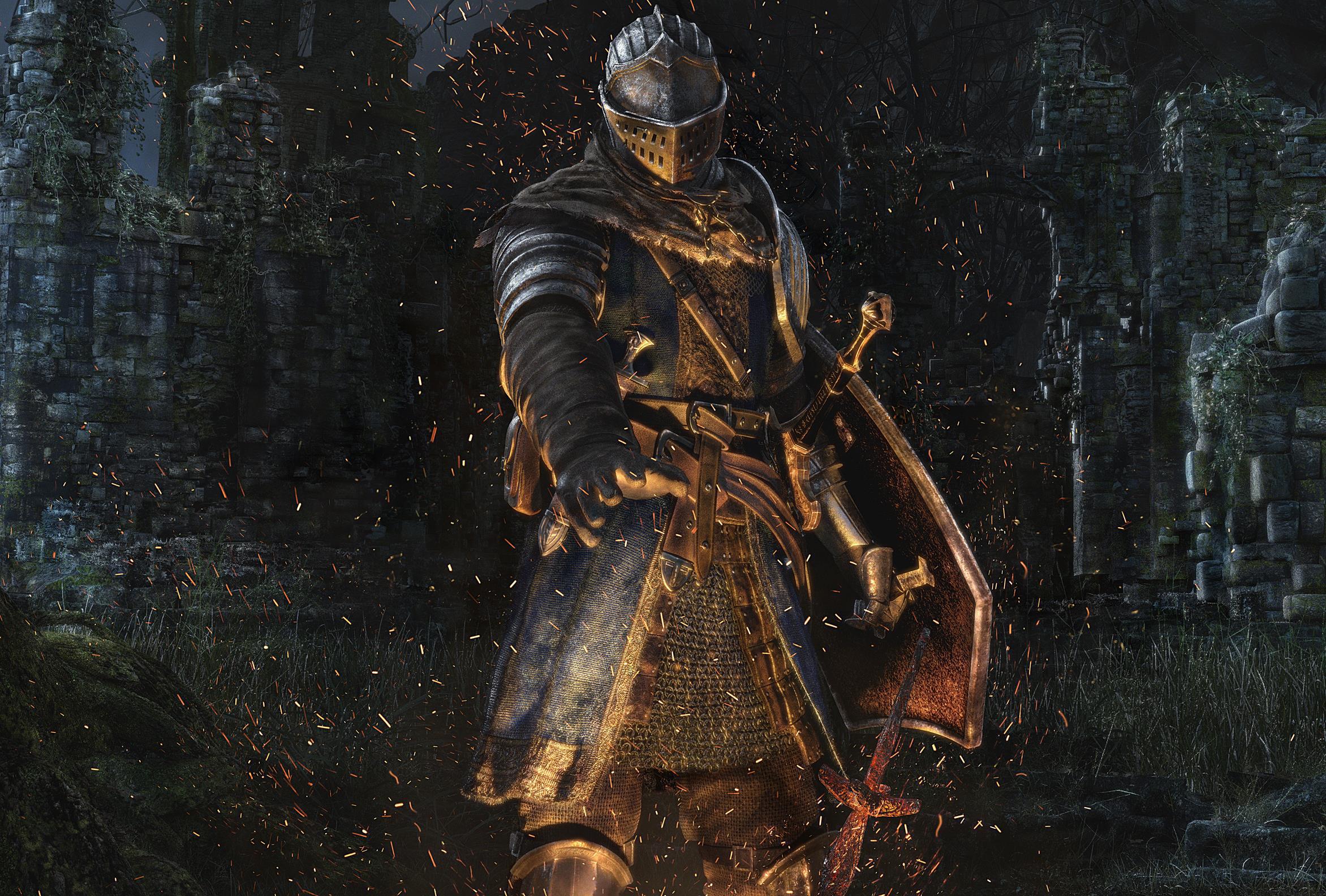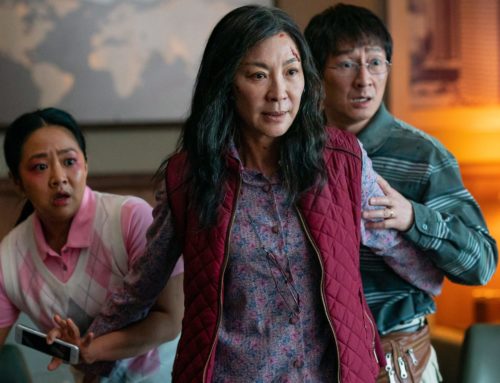With everyone going nuts over a little indie game called Elden Ring, I thought I’d take a look at the even less known Dark Souls games, of which there are three. Or four, if you include Demon’s Souls, which I haven’t played (yet).
So, why do I want to talk about these old-ish games? Because of the Elden Ring hype, that’s why (duh!). And because I’ve recently replayed them on my PlayStation 5, along with their cousins, Bloodborne and Sekiro: Shadows Die Twice. What struck me the most when replaying them is that they are not nearly as challenging as I thought they would be. Don’t get me wrong – they’re still tough, but they’re not as tough as you probably think (I did complain about their difficulty here, if you’re interested).
With that in mind, I wanted to address those who haven’t played the Dark Souls games and those who have played them, but gave up before finishing them. If there’s anything that appeals to you about these titles, or if you’ve been thinking about playing them for a while, but haven’t because of the difficulty, then I implore you to give them a chance. Here’s a simple reason why you should – they are NOT Nintendo-hard. They’re not even hard-mode hard (aka as hard as the hardest difficulty in a regular AAA game). They are Dark Souls-hard, and that’s its own unique brand of difficulty. I’ll explain what I mean by that below.
But before I do, let me specify that I’ve played the PlayStation 4 versions of these games, and I’ve played them all on my PlayStation 5. Specifically, these editions:
Now that you can roughly tell what my experience was like (aka 60 FPS + fast loading times), let’s explore why these games are probably for you:
Gameplay
For the sake of convenience, I broke up the gameplay into three categories:
1. Exploration
Unlike Elden Ring, the Dark Souls games don’t have a large open world to explore. Instead, they offer a network of interconnected pathways, all of which branch out from a main “hub” area, where you, the player, get to meet various NPCs, buy or sell items, level up and engage in other shenanigans. The specifics of what you get to do at these hubs and how interconnected the pathways are vary from game to game, but the core concept is roughly the same in all three.
Like in the early Zelda games, you cannot explore the entire world right off the bat, since a lot of its pathways are hidden behind locked doors. To unlock them and progress further, you often have to defeat a boss.
As you explore, you’ll come across a wide assortment of creatures, both humanoid and beast-like, few of which are friendly (though some are, so be careful not to kill them!). You’ll also gather loot, including weapons, equipment and various trinkets that can strengthen your character (usually temporarily).
Some areas include traps, but those are not as common as you might think. There are no puzzles or platforming sections (for the most part), so you don’t need to worry about any of that. What you do need to worry about are the environments themselves, which are quite treacherous. The pathways are often narrow, and many of them have edges, from which you can easily fall to your death. Lava lakes and poisonous swamps aren’t uncommon either. Some areas can appear labyrinthine due to how their pathways loop on themselves, but that’s only an issue early on, when you’re still trying understand how interconnected everything is. By midpoint, you’ll have a good idea of how to navigate this world, and by the end, you’ll know it like the back of your hand, believe me.
The biggest hurdle for most players is the checkpoint system. All you get are these things called “bonfires,” which you activate by interacting with them. When you die, you respawn near the last bonfire you interacted with. In the second and third Dark Souls, you can also warp between the bonfires you’ve already found, to make traversal slightly easier. In the first game, this ability needs to be earned (which, sadly, doesn’t happen until the halfway point). The problem is that these bonfires are far apart from each other, and whenever you die, all enemies respawn with you, which can make progressing from bonfire to bonfire a daunting task.
Luckily, Dark Souls throws you a bone by allowing you to unlock shortcuts that connect either to the main hub, which has its own bonfire, or to various bonfires throughout the game. These act as checkpoints in their own way, so it’s worthwhile to seek them out. Most of the locked doors or elevators that say “locked from the other side” are your future shortcuts.
Finally, unlike most modern games, Dark Souls have no maps and HUD markers of any kind, forcing players to observe their environment and memorize its intricacies. This may seem like a lot at first (it did for me!), but you will get the hang of it, trust me. In fact, you may end up preferring this method of navigation to what you see in other games, which tend to show you exactly where to go.
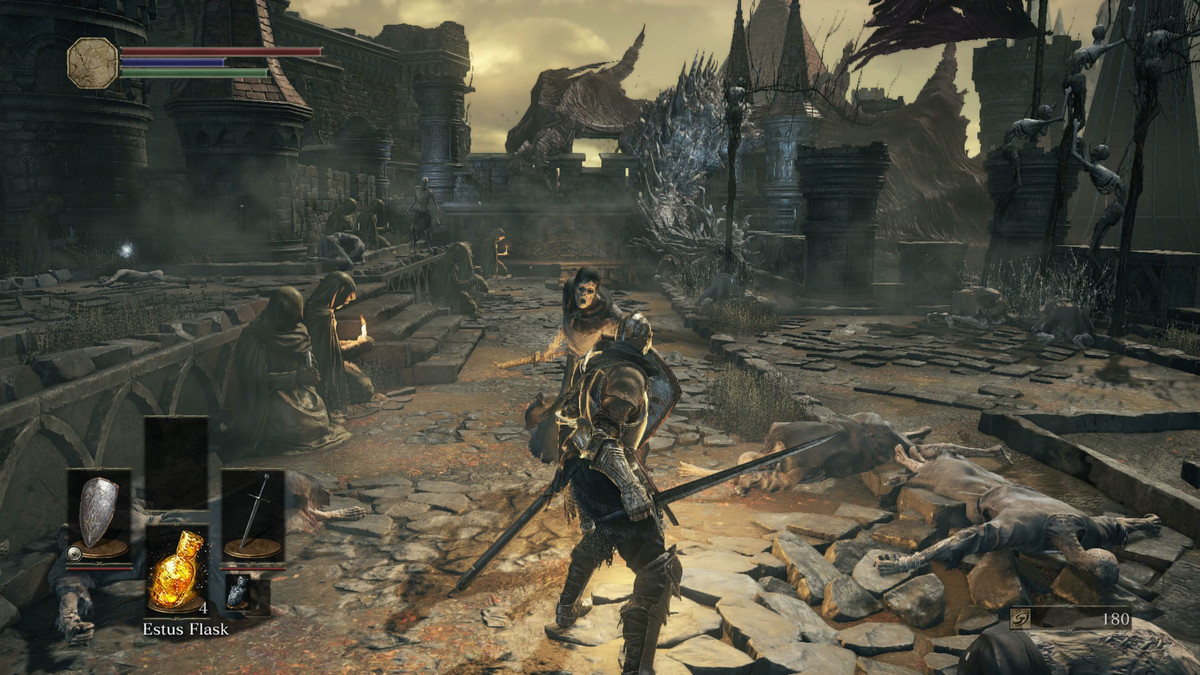
Dark Souls 3’s HUD.
Now let’s move on to…
2. Combat
You’ll do a lot of fighting in these games. Since there are no HUD markers, enemies will often come at you out of nowhere, and on your first playthrough, you’ll never be quite sure if you’ve killed them all. Some may still be lurking around, either dangling from a ceiling or hiding behind a corner.
In terms of weaponry, your go-to will be some form of melee weapon – either a sword, axe, club or something else that’s vaguely medieval. Magic is also a powerful option – though most would argue that it’s not beginner-friendly, since magic users can be quite weak (in games where you already die in a handful of hits). Bows, crossbows, throwing knives and other long-distance weapons exist too, but using them is both cumbersome and time-consuming. Plus, they never do enough damage to be any fun (at least, for me). They’re best used as secondary weapons, in case you need to cheese your what out of a tough spot or draw enemies away from large groups.
As a beginner, you may also want to get yourself a shield and keep it for the rest of the game, since it can turn seemingly impossible fights into cakewalks. Shield-blocking is penalized, but not enough to detract you from abusing it. So, abuse it, please!
The combat itself is generally slow. Very slow. You’ll usually see an attack coming from a mile away. Likewise, when you hit an attack button, your character takes just as long to land a blow as the enemy. In addition, once you start your attack animation, there is no backing out of it. You’re locked into it. Same goes for blocking. So, time your attacks and blocks carefully.
To make combat a little spicier, Dark Souls games also feature a green bar for stamina. With each attack, your stamina depletes by a little bit. The same happens whenever you block an attack or dodge-roll out of the way. So, you have to be strategic about every move you make. The last thing you want is to be out of stamina when you need to block or dodge, since at that point, you’ll definitely take damage.
Speaking of dodge-rolling – you can do it whenever an attack comes your way, as long as you have enough stamina. In fact, when you’re rolling, you’re completely invincible. However, the length of your invincibility during a roll will depend heavily on how encumbered your character is.
Every piece of equipment (that’s equipped and isn’t in your storage/backpack) will weigh your character down. Your armor, shield, sword, bow and so forth will not only slow you down, but make you more likely to get hit and take damage during a roll. Typically, the more protective your armor is and the more damaging your weapon is, the more they weigh you down. So, there’s a strategic tradeoff there. You can be fast and agile, but at the expense of protection and damage output, or vice versa. Dark Souls 2 also has an extra caveat when it comes to dodging, but more on that later.
Let’s talk about blocking. If you just press the block button and hold it, you’ll severally limit the damage your character can take from a hit, but at the cost of stamina. However, if you press the block button right before your opponent is about to hit you, you can parry the attack and make the enemy briefly vulnerable to a counterattack. If mastered, parrying can turn many enemies and bosses into total pushovers. But there are several drawbacks to parrying too. First, if you miss a parry, you’ll take a lot of damage. Second, not all enemies and attacks are parry-able. And third, parrying can be tricky, especially for a novice.
Another strategic aspect of the combat is that enemies can be weak or immune to certain elements, such as electricity or fire. So, if you have a fire sword, for example, and the enemy is immune to fire, you won’t inflict any damage. The opposite is the case if fire is a weakness, since then you’ll be doing extra damage. What’s cool is that you can also temporarily enhance your weapons with various elemental capabilities by using consumables. They don’t last long and are relatively rare, but they can definitely help you out, especially during boss fights.
Finally, there’s the healing system. In all three games, you’ll be using an item called the Estus Flask to heal yourself. You can’t purchase or find it anywhere in the world, and you can only carry a certain amount of it, which will depend on the game you’re playing and whether you’ve upgraded your Estus carrying capacity. The only way to restore the Estus in your possession is to either return to a bonfire or die. Dark Souls 2 is the only game in the trilogy to provide you with health pickups, which come in the form of lifegems. They don’t get restored at the bonfire, like the Estus Flask, but they can be found on various enemies and purchased from certain vendors. The lifegems exist in addition to the Estus Flask, which makes Dark Souls 2’s approach to healing the most versatile out of the three games.
3. Character progression
In all three Dark Souls, you get to create your own character. You get to choose your class, appearance, attributes, gender and so on, like in a proper RPG. You can then level up your character and invest points into various attributes. The ones that appear in all three games include:
- Vitality
- Attunement
- Endurance
- Strength
- Dexterity
- Resistance
- Intelligence
- Faith
The first Dark Souls also features something called Humanity, which tells you how many times you can restore your character to their human form after they become “hollowed” – more on that below. Dark Souls 2 and 3 throw in an attribute called Vigor, which is similar to Vitality in that it affects your character’s health. Unique to Dark Souls 2 is an attribute named Adaptability, which dictates how long your character remains invincible when dodge-rolling. The more points you put into it, the more easily you can dodge without taking damage. Finally, Dark Souls 3 adds something called Luck, which basically improves your chances of finding items on dead enemies. More points equal more items.
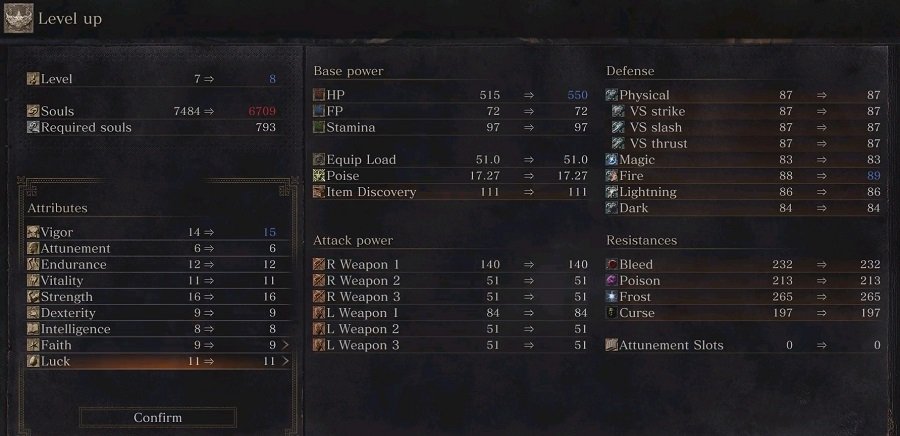
Character sheet in Dark Souls 3.
To level up, you need to collect souls, which you do by killing enemies and bosses. Once you have enough souls for your next level, you can level up. In the first Dark Souls, you do this by going to a bonfire, and in Dark Souls 2 and 3, by interacting with a particular NPC. You only get one point per level, and the more you level up, the more souls you will need for your next level.
Speaking of souls, if you die, you lose them all, down to zero. Upon resurrection, you can recover them from where you died, but if you die before doing so, they become lost forever, and you have to accumulate them from scratch.
When you die, your character becomes “demoted,” so to speak, (or “hollowed,” in Dark Souls and Dark Souls 2), which makes them lose certain abilities and/or a little bit of health, depending on the game. Dark Souls 2 has the harshest penalty for dying, since your health reduces by a slight amount with every death, until it is halved, at which point the reduction stops. You can fix this “demoted” state by consuming a certain item, but like everything else in these games, it needs to be a carefully considered decision, as these consumables are limited in number.
In addition to leveling up your character, you can level up your weapons, shields and armor (though the latter is not possible in Dark Souls 3). So, if you find a piece of equipment that your really like, chances are you can upgrade it and keep it around for most of the game, possibly until the end.
With all three of these distinct elements combined – exploration, combat and character progression – what you get is games that force you to think and pay attention to everything, with every step you take. This in turn makes you more immersed in their fictional universe. You’re not just blindly stumbling through it, like you do in most AAA games, you’re living in it – or rather, surviving in it, often by the skin of your teeth. So, if you’re annoyed by many modern games due to their lack of “immersion,” then play Dark Souls. Unless, of course, you’re still put off by the difficulty, in which case, keep reading.
Difficulty
The Dark Souls games are tough. Many have pointed this out. But I don’t believe this should deter you from picking them up, especially if you find them enticing in any way. Here’s the hard truth (for Dark Souls devotees, at least) – these games do have adjustable difficulty. What they don’t have is the option to adjust it in a menu. Instead, they force you to find your suitable difficulty within the games themselves. By exploring them and becoming fully immersed in them.
That being said, here are the biggest hurdles that many Dark Souls novices (aka me) face, and how to overcome them:
1. Constant death
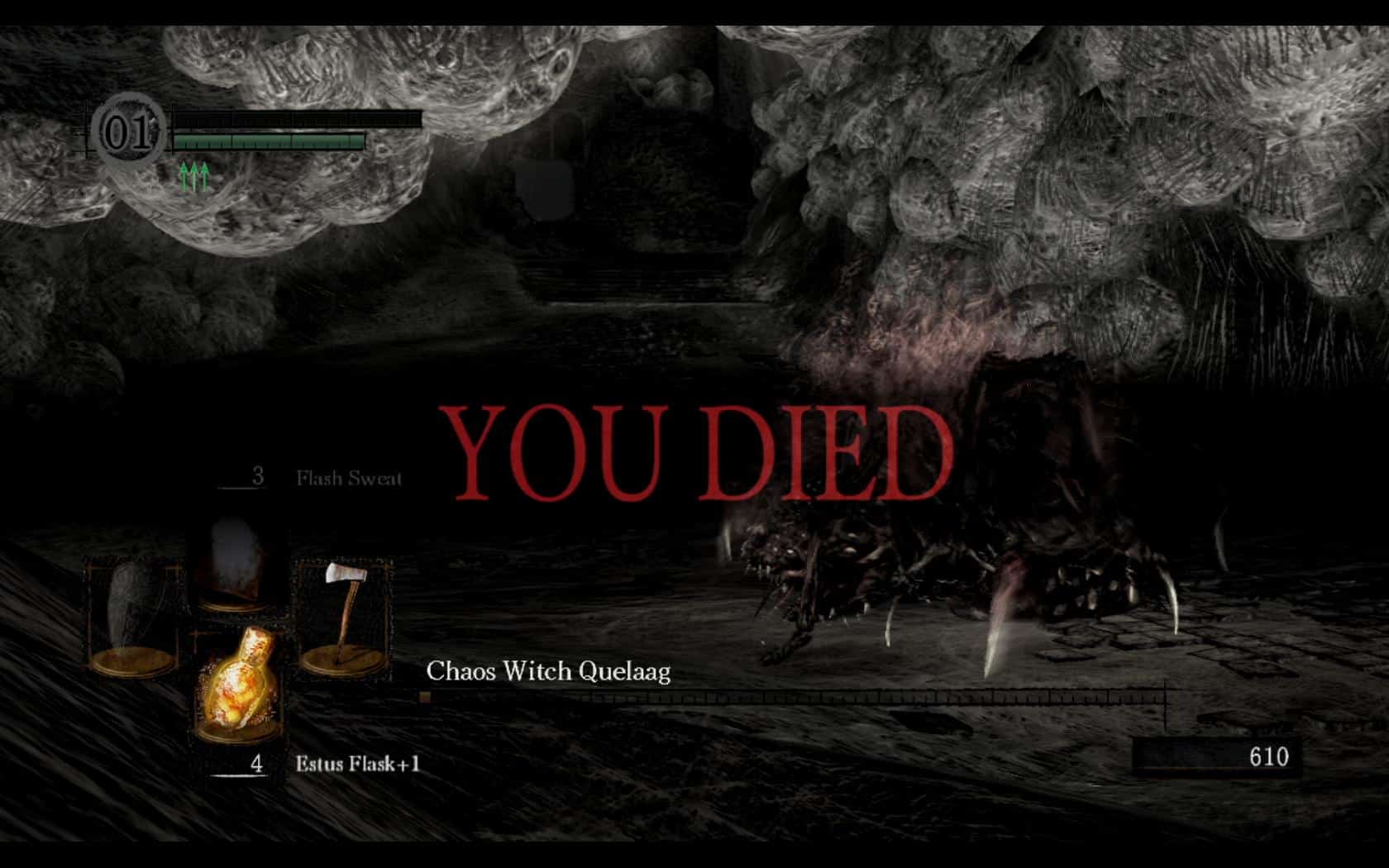
Let’s start with the obvious one – death. Yes, you’ll die a lot in these games. However, unlike in most games, death isn’t a setback. At least, not in the narrative sense.
When you die in a game like Uncharted, for example, it comes off as a narrative fluke – something that shouldn’t have happened. And thus, it feels as though death prevents you from progressing in the narrative. And it’s not a good feeling.
In Dark Souls, death and resurrection are part of the narrative. Dying and coming back to life is what your character does, and they do it to learn and adapt to the world around them. The same applies to you, the player. So, instead of looking at death as an annoying setback, look at it more as a learning opportunity, because that’s what it is within the narrative for your character.
Whenever you die in Dark Souls, you usually know what killed you – whether it’s an enemy, a trap or a sheer cliff. That way, when you come back to life, you know what to expect. You’re a little more prepared. Even if you die again in that same spot, you’re likely to learn something from it. Learn more than what you’ve learned before. And the more often you die, the more likely you are to learn all you need to overcome the obstacle. The Dark Souls games are very clear when telegraphing the causes of your death. This feedback loop encourages you to try again every time, until you succeed. Which you will, I guarantee it.
So, the key to succeeding in Dark Souls is embracing death. Consider it a core mechanic. Once you do that, you’ll find Dark Souls much easier to play.
2. Navigation
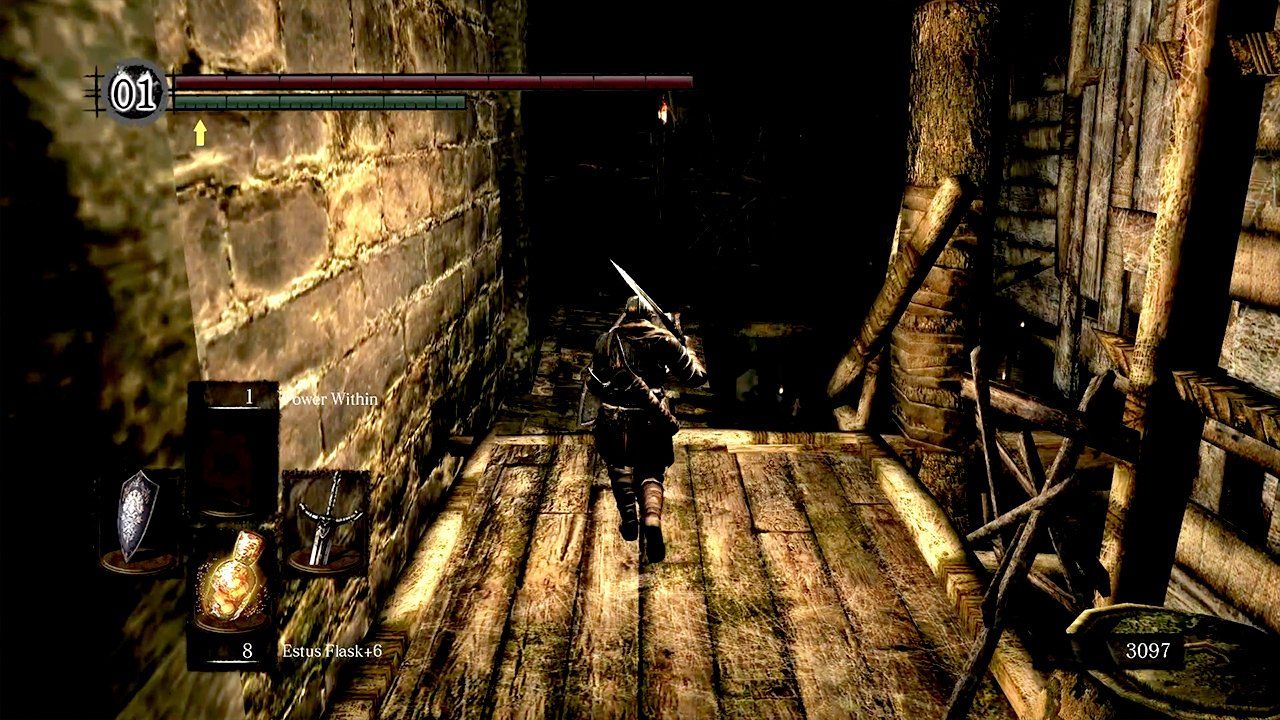
Navigating a complex world without a map can be tricky. However, the saving grace in the Dark Souls games is that their worlds are actually quite small. So, if you can remember how to get around your neighborhood, without a map, then you’ll be fine here.
The bigger challenge, especially in the first two Dark Souls, is knowing where to go first. While there is no strict level gating in these games, unlike in some other titles (looking at you, Assassin’s Creed), certain areas are decidedly easier for low-level characters than others.
The original Dark Souls features a now infamous example of this. In one direction lies the Undead Burg – an area teeming with relatively easy to kill undead, and in another, a cemetery full of walking skeletons, which are quite powerful and don’t seem to die (because they constantly resurrect). The Undead Burg is where you’re supposed to go first, yet there is nothing in the game to indicate this, other than the toughness of the skeletons.
And generally speaking, that’s the only indicator you’ll need. If you’re having trouble with one area, try another. Whichever one turns out to be easier is the direction in which you’re meant to go.
If you’re still confused, there is no shame in looking up a walkthrough. One of my favorite walkthrough creators for soulslikes on YouTube is FightinCowboy, so be sure to check him out. Various wikis may also be of help. I’ve used plenty myself.
3. Nothing makes sense!
You may also find it difficult to understand how certain things work in these games – from gameplay mechanics to the items you find along the way. For instance, in the first Dark Souls, there is the aforementioned hollowing mechanic. Basically, after each death, your character begins to resemble a rotting corpse (aka they go “hollow”). When I first started playing the game, I couldn’t figure out how to reverse this state, or what the penalties for it were. Google proved to be of great help in this regard. The same applied to weapons, armor and other trinkets. There are plenty of articles that’ll help you determine the best equipment and items for your built. So, keep your smartphone handy, and don’t be afraid to use Google whenever you don’t understand something. No one will judge you! (except for you, maybe)
4. Lack of checkpoints
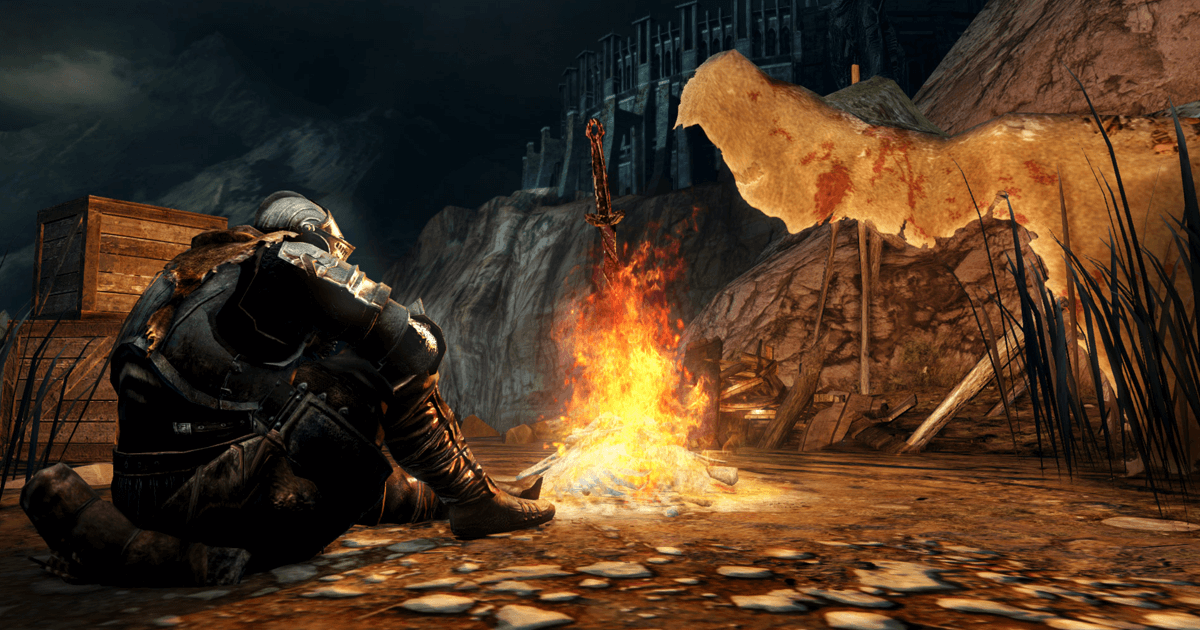
Even with shortcuts, getting through certain areas can be a pain in the butt. Blighttown in the first game is a particularly nasty area – not just because it’s confusing to navigate, but because the enemies there can inflict a condition on you known as “toxic,” which rapidly depletes your health.
The trick to bypassing areas like Blighttown is to explore them as much as possible before your inevitable death, then once you resurrect, run past all the enemies to where you died, recover your lost souls and continue on. Every time you play, do your best to memorize the layout of each area as well as trap and enemy placements. If you do that, you shouldn’t have too much trouble finding your way through. And again, don’t get upset when you die. Look at it as just another step toward success, and you’ll get there, you’ll see.
Additionally, as you die repeatedly, you’ll notice yourself getting better and better with each attempt, and you’ll feel good about it. You’ll want to continue on. That’s basically how these games hook you in.
6. Tough combat
I would make a controversial statement here and state that the combat in Dark Souls isn’t all that hard. At least not when you’re dealing with normal enemies. Bosses and mini-bosses are a different matter, and I have a whole section for them. If your character and equipment are all at the appropriate level for the area, then you should be able to defeat most enemies without dying too often.
The biggest reason you might die is if you run through an area too quickly, attracting more enemies than you can handle at once. To avoid this, traverse each locale slowly and pay attention to your environment. You shouldn’t be fighting more than one or two enemies at a time. Admittedly, in some cases, you may attract more than two. If that happens, use the environment to separate them and kill them that way. Be strategic. Divide and conquer.
I will note that Dark Souls 2 is, again, the exception to the rule. The enemies in this game are very, very plentiful, so a different strategy sometimes is necessary (only sometimes!). In all three games you have a choice of using your melee weapon in either one hand or two. If you two-hand a weapon, you can hit several enemies at once, particularly if that weapon has a long reach. This approach proved invaluable for me in Dark Souls 2. Furthermore, running past enemies is a no-no in Dark Souls 2, meaning you have to fight them. But again, individual enemies aren’t tough on their own, so if you divide and conquer where possible, you shouldn’t have trouble taking them down.
And if you do have trouble, you have yet another option – farm for items and levels. You can level up your character up to a point where everything is trivial. This is the “easy mode” of Dark Souls. Just beef up you character and equipment, and I promise you won’t struggle too much.
7. Tough bosses
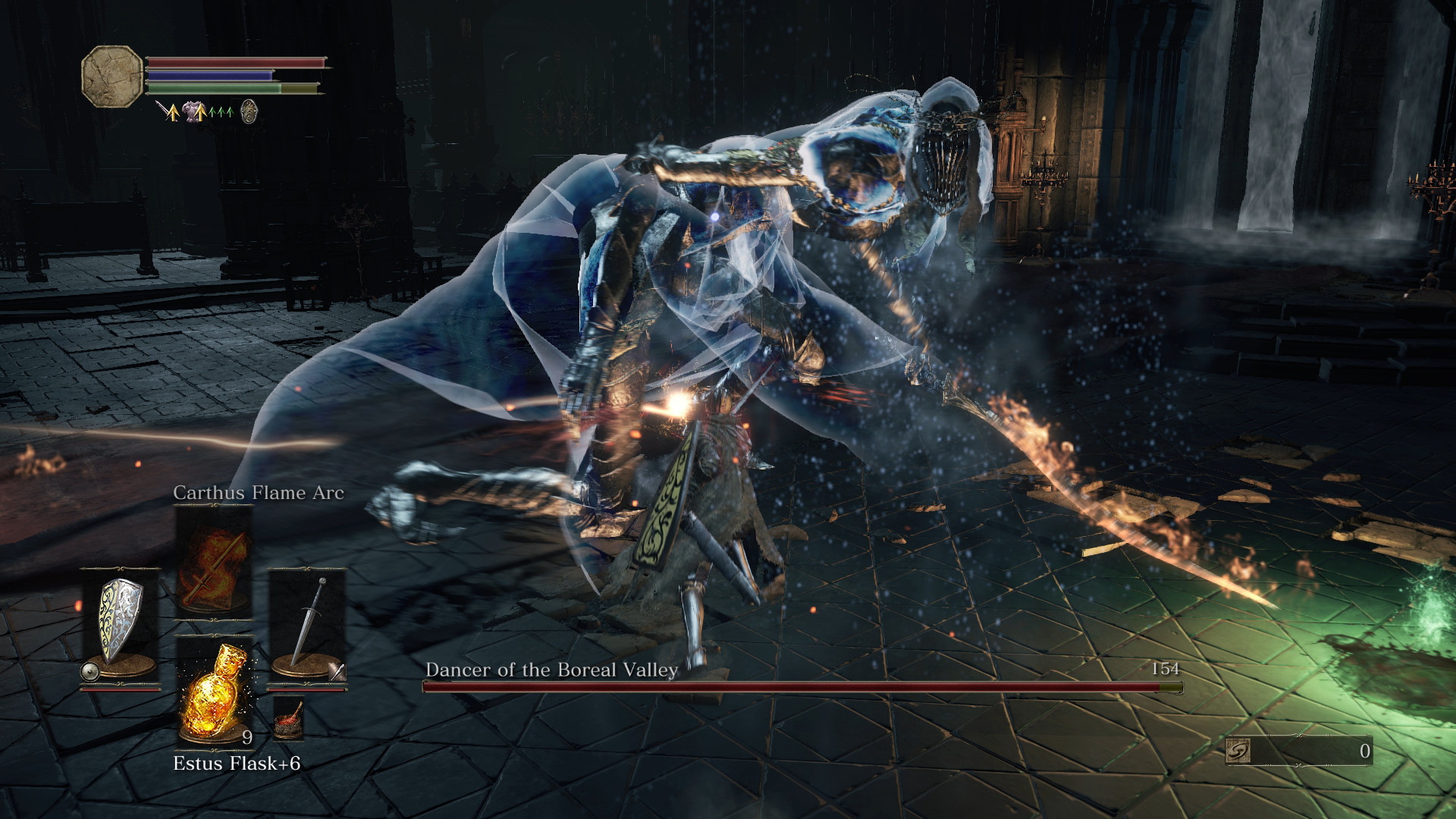
Okay, so, some bosses can be tough, especially in Dark Souls 3 and the DLC for each game. I’d argue that Dark Souls 3 has the toughest bosses overall. So, if you’re worried about that, definitely pick up one of the preceding titles first.
There are two ways to make bosses easier – over-leveling your character and using NPC summons (incorporeal warriors who fight on your side). You can also summon real players, if you’re online. To enable NPC summons, you do have to do some of their quests. I suggest looking them up online, because the games are a little too cryptic in this regard.
By over-leveling and using summons, you should have a decent chance at overcoming most bosses. In some cases, however, you’ll still struggle. When that happens, don’t be afraid to look up walkthrough videos online. Watch them carefully to see how to defeat the boss and apply those strategies. The bosses in the base games are generally not too tough, especially in Dark Souls and Dark Souls 2, so with a little practice, you should overcome them.
Finally, don’t be afraid to experiment with various playstyles. If your character is heavy-armored, for example, you may find it helpful to take off that armor, so you can dodge more effectively. Sometimes, you may want to try a fast, low-damage weapon, instead of a slow, high-damage one. Dark Souls 3 is particularly good at encouraging experimentation, so be sure to take advantage of that.
And that’s about it when it comes to difficulty. There’s really no reason to worry about it. I’m someone who plays most games on “easy” or “normal” difficulty, since I don’t have the patience for anything higher, and I’ve had no trouble finishing any of the Dark Souls games. Or Bloodborne and Sekiro, for that matter. If I can do it, so can you!
What Else is Good in Dark Souls?
Everything else! Music, sound and voice acting are all great. Voice acting, while not exemplary, fits the setting well – as in, it’s appropriately grim and British-sounding. As for music, it’s all orchestral, and plays primarily during boss fights. What’s great about the music in all three games is that it reflects the mood and pace of each fight. If it’s a tragic fight, then the music will be appropriately sad, for instance. Then you have the sound design. Ambient noises like growls, wind howls and so forth are what you’ll be hearing for the majority of your playthrough, and they all sound properly atmospheric. The world of Dark Souls is a frightening place, and you’ll feel it on your skin.
The graphics are okay, but not great. Dark Souls and Dark Souls 2 look especially dated, and Dark Souls 3 is not too far off. What’s more impressive is their artistic direction. Despite the dated graphics, every locale still looks gorgeous – from the drank ruins under a giant tree to the cobbled streets of a moonlit city. The same applies to enemy and boss designs. They are all unique, and horrifying in their own way.
Finally, there is the narrative. Like the gameplay, it’s cryptic and hard to decipher. However, there’s a kind of poetry to it. Nothing is set in stone, and everything is up to interpretation – from lore to dialogue, to the intentions of every character. If you like games like Shadow of the Colossus, or even something like Journey, you’ll likely appreciate the narrative here.
The basic premise is that the world is about to be consumed by eternal darkness, and it is your task to relight the flame that will keep the world from dying. As you progress through the story – and if you pay attention – you’ll discover that there is more to your task than meets the eye. What’s more is that you get to choose an ending, though the implications of each are as murky as everything else in these games.
In Conclusion… Play Dark Souls!
You can buy all three on any platform – PC, Xbox, PlayStation or Switch. I suggest starting with the first game (Dark Souls: Remastered), since it’s the easiest of the three, and go from there. Once you’re done with the trilogy, I recommend checking out Bloodborne – even though it’s only available on PlayStation 4 and 5 – and then Sekiro: Shadows Die Twice (definitely play this one last, as it is the toughest one). I haven’t played Elden Ring yet, but I’m sure it’s great too. Anyway, go get your copy of Dark Souls: Remastered and let me know what you think!
